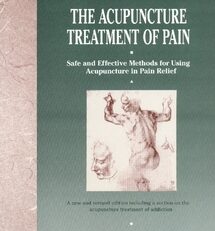Description
By Giovanni Maciocia
Hardcover book
ISBN 9780443064487
1127 pages
This immense tome begins with endorsements by the luminaries of Chinese medicine in the west, a 33 page Table of Contents that reveals the scope of the text, a Foreword by Julian Scott, a Preface by the author, Aknowlegements, a Note on the Translation of Chinese terms, a guide on How to use the book and an innovative Index of symptoms and signs.
The book is organized by Chapters within Sections, Sections within Parts. These begin with Parts explicating the four examinations: Diagnosis by Observation, Diagnosis by Interrogation, Diagnosis by Palpation, Diagnosis by Hearing and Smelling. These are followed by Part 5, which is divided into a section on Symptoms and Signs presented by parts of the body and a section on gynaecological symptoms and signs. Part 6 covers pattern identification in four sections: internal organs; qi, blood and fluids; pathogenic factors, four levels, six stages and three burners; eight principles, twelve channels, eight extraordinary vessels and five elements.
The text concludes with Appendices on Case Histories, Prescriptions, and the History of Diagnosis in Chinese Medicine, a Glossary of Chinese Terms, a Bibliography, Chinese Chronology and Index.
The book is in a compact, modern textbook format that presents a lot of information in a highly accessible manner. The chapters contain not only prose discussions but summary tables, case histories, illustrations. flow charts, term comparisons, and clinical notes. The design is highly innovative to make the book easier to access through type and color differentiations as well as icons and cross references. The use of a second color within the text and the color plates found at the back of text where they can be easily access while reading add a further dimension of convenience and practical comprehension.
This work is an easily accessed and highly illustrated guide to diagnosis in Chinese Medicine. Emphasis is placed on issues and symptoms commonly encountered in clinical practice, and the text focuses on interpreting these signs and symptoms. It is the author’s thesis that since Chinese medicine diagnosis relies on a subjective appraisal of the patient.s symptoms and signs – which form a pattern . many factors beyond traditional Western symptoms must be taken into consideration. A subtle appraisal of a patient’s disharmony, and a careful interpretation of a range of nuances, will lead the student or practitioner to a successful diagnostic interpretation.
Following is a top-level description of the text content.
Chapters within Diagnosis by Observation include:
- Classification of Body Shape, Physique and Demeanor
- Observation of the Mind, Spirit and Emotions
- Observation of the Complexion and Color
- Observation of Body Movement
- Observation of the Head, Face and Hair
- Observation of the Eyes
- Observation of the Nose
- Observation of Lips, Mouth, Teeth, Gums and Philtrum
- Observation of the Ears
- Observation of the Throat and Neck
- Observation of the Back
- Observation of Women’s Breasts
- Observation of the Heartbeat
- Observation of the Hands
- Observation of the Nails
- Observation of the Chest and Abdomen
- Observation of the Genitalia
- Observation of the Four Limbs
- Observation of the Legs
- Observation of the Excretions
- Observation of the Skin
- Observation in Children
- Tongue Diagnosis
- Tongue-Body Color
- Tongue-Body Shape
- Tongue Coating
- Tongue Images and Patterns
Chapters within Diagnosis by Interrogation include:
- Introduction
- Pain
- Food and Taste
- Stools and Urine
- Thirst and Drink
- Energy Levels
- Head
- Face
- Throat and Neck
- Body
- Chest and Abdomen
- Limbs
- Sleep
- Sweating
- Ears and Eyes
- Feeling of Cold, Feeling of Heat and Fever
- Mental-Emotional Symptoms
- Sexual Symptoms
- Women’s Symptoms
- Children’s Symptoms
- Diagnosing the Causes of Disease
Diagnosis by Palapation includes chapters on:
- Pulse Diagnosis
- Pulse Qualities
- Palpation of Parts of the Body
- Palpation of Channels
Diagnosis by Hearing and Smelling includes:
- Diagnosis by Hearing
- Diagnosis by Smelling
Symptoms and Signs includes a section on general symptoms and signs containing chapters on:
- Head, Hair and Face
- Face Color
- Nose
- Throat
- Mouth, Tongue, Teeth, Gums, Lips, Palate and Philtrum
- Eyes
- Neck, Shoulder and Upper Back
- Chest
- Limbs
- Arms
- Legs
- Lower Back
- Body
- Digestive System and Taste
- Thirst and Drink
- Abdomen
- Defecation
- Urination
- Anus
- Men’s Sexual and Genital Symptoms
- Sweating
- Skin Signs
- Emotional Symptoms
- Mental and Emotional Symptoms
- Mental Difficulties
- Feeling of Cold, Feeling of Heat and Fever
- Voice, Speech and Sounds
Symptoms and Signs includes a section on gynecological symptoms and signs containing chapters on:
- Menstrual Symptoms
- Problems at Period Time
- Problems During Pregnancy
- Problems after Childbirth
- Breast Signs
- Miscellaneous Gynecological Symptoms
Symptoms and Signs includes a section on pediatric symptoms and signs containing a chapter on Children’s Problems
The first section of Part 6 covers Identification of Patterns according to the Internal Organs with chapters for each of the internal organs.
The second section of Part 6 covers Identification of Patterns according to qi, blood, yin and yang.
The third section of Part 6 covers Identification of Patterns according to pathogenic factors, four levels, six stages and three burners. It is presented as the following chapters:
- Identification of Patterns According to Pathogenic Factors
- Identification of Patterns According to the Four Levels
- Identification of Patterns According to the Three Burners
- Residual Pathogenic Factor
The fourth section of Part 6 continues coverage of Pattern Identification with chapters on the Eight Principles, Twelve Channels, Eight Extraordinary Vessels, and Five Elements.






Reviews
There are no reviews yet.